What is Gout?
Uric acid is a normal constituent of the blood. However, difficulties appear when the amount of uric acid exceeds the normal natural limit of 0.4 mmol / l. This condition is described as Hyperuricemia.These circumstances cause urate crystals delaying in joints and around the joints, causing inflammation with swelling, redness, and pain. Most often toe is affected, but other joints, knees, for example, may be affected too. This disorder is known as gout.
The same process may happen in the kidneys, with the formation of stones, or in other organs.
This disorder is usually caused by inherited defects at the level of genes resulting in the increased creation of urate. Also, renal diseases and disorders of the Haematopoietic system, which by increased urate generation or their reduced secretion cause Hyperuricemia.
Gout often occurs due to excessive food intake rich in purines and the consumption of alcohol which increase urate level in the blood.
Gout Diet
The best diet for gout assumes nutrition without purines, avoidance of alcohol, increased intake of fluids - at least 3 l per day, reducing excessive body weight, alkalization of urine by taking baking soda, etc. If all this is not enough, you should use drugs to block the creation of purines and accelerate the excretion of uric acid through the kidneys.
For arthritis pain accompanied by swelling, different anti-inflammatory agents, including nonsteroidal anti-inflammatory drugs, are prescribed.
- Diet interventions, including low-calorie diets (but not fasting), purine-low diets, and different variations of the Mediterranean diet, were able to decrease SUA in patients with asymptomatic hyperuricemia or gout. The range in SUA change after the interventions (excluding fasting) was +0.3 to ?2.9 mg/dL. Most studies included in this review reported baseline SUA between 6.5 and 9.7 mg/dL. According to the EULAR guideline, this implicates a required decrease of 0.5 to 3.7 mg/dL to achieve target levels.
- A more detailed view on the content of the three diet categories (calorie restriction, purine low, Mediterranean) reveals that the diets look very different at first sight but also have characteristics in common, such as less animal protein, less saturated fatty acids, and less alcohol, resulting in a less energy-dense and thus lower-calorie diet. Although both the purine-low and the Mediterranean diets are low in animal-based purines, they differ in their levels of plant-based purine from legumes and vegetables. This could be an important difference, as observational studies have shown that in fact, higher intakes of legumes are associated with a significantly lower risk of gout
- Calorie restriction seems to be an effective strategy for weight loss (5% to 8% of initial body weight) and improvement of the lipid profile. The long-term feasibility of a low caloric intake is, however, questionable. Mediterranean-style diets also seem to induce weight loss (0%–4%) and improve lipid profiles. Blood pressure was measured in only two studies, with one study showing no effect.
- Effects of the Mediterranean diet on patients with gout or hyperuricemia, however, have not yet been studied sufficiently. A purine-low diet could be an alternative, although this diet is less comprehensive and mainly focuses on its effect on SUA. Based on the current evidence, however, a Mediterranean diet low in animal-based purines obviously adds the benefits of both diets. In the category of Mediterranean-style diets, the DASH is most probably best defined and evidence based regarding cardiovascular risk factors.
Foods that are Recommended
It is advisable to use lean meat or fish in the amount of 150 g per day.Milk products such as milk, yogurt, sour milk, cottage cheese, mozzarella, trappist cheese, butter, and other half-fat cheeses are allowed.
All kinds of root vegetables - carrot, beet, turnip, radish, green leafy vegetables are recommended in the case of gout.
Person who suffers from gout can eat all kinds of fruit without any consequences.
As for cereals it is recommended to have 150 g of white bread, 150 g pasta, rice, or boiled potatoes a day.
Vegetable oil, honey, or sugar should be consumed in small quantities up to 50 grams daily.
Foods to Avoid
All offal (liver, brain, kidneys, and heart), sardines, anchovies, and similar fish, salamis, sausages, and other meat products with pepper should be completely excluded from use.
As for dairy products, full-fat cheeses are not recommended.
Vegetables such as mushrooms, all legumes (peas, beans, lentils, broad beans) spinach, cauliflower, and asparagus may have a detrimental effect on patients suffering from gout.
Brown bread, corn and rye bread, polenta, cornmeal are foodstuffs that are not recommended in the case of gout.
Fats, cakes, and other sweets are strictly prohibited, such as alcoholic beverages because they can cause a gout attack. The attack is usually indicated by red wines, champagne, beer, and liqueurs.
For people who suffer from gout is advisable to drink 1.5 to 3 l of fluid (water, mineral water, or tea) per day.



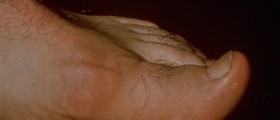

-Symptoms,-Diagnosis,-Treatment_f_280x120.jpg)
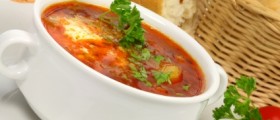

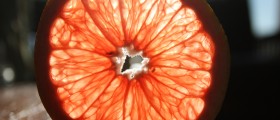
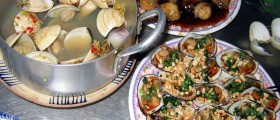
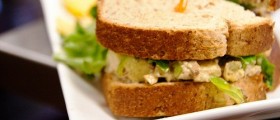
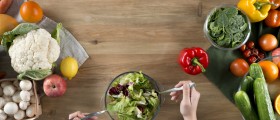



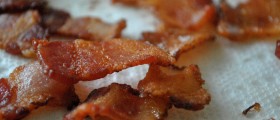

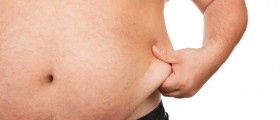
Your thoughts on this
Loading...